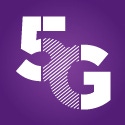
Nokia Networks has unveiled its complete 5G framework, an architecture made up of the elements that will take wireless operators into the next generation. The announcement includes an agglomeration of radio and core network technologies, but network slicing is the key element.
Network slicing is a term that comes from the SDN world, meaning to segment different traffic types for applications and users on the network. These "virtual sub-networks" can be created directly from the radio network, and they enable operators to offer specific quality of service, latency, reliability or other network performance attributes for that use case. (See SK Telecom, Ericsson Team Up on 5G Network Slicing and Ericsson's Network Slicing: It's Far Out, Man.)
In announcing its 5G framework, Nokia Networks identifies network slicing as a key 5G element, along with dynamic experience management or automatic quality of experience optimization of each application session; service-determined connectivity to choose the IP connection based on demand; fast traffic forwarding via Nokia's AirFrame data center platform; and mobility on demand to use network resources more efficiently. (See Nokia Advances MEC for 5G, IoT.)
For more on 5G, visit the dedicated 5G section here on Light Reading.
According to Heavy Reading Senior Analyst Gabriel Brown, the framework hits all the right buzzwords and provides a reference for technology development, but it is the network slicing element that will be what makes 5G more than just a faster network. (See 5G: What Is It & Why Does It Matter? and Heavy Reading Q&A: Getting to the Heart of 5G .)
"Operators are crystal clear they don't want 5G to be just faster mobile broadband with the same old business model," Brown says. "The industry needs to link network services to major new commercial opportunities and that's what the network-slicing concept really addresses. In that sense 5G can be a genuine paradigm shift."
Nokia says that by using network slicing, a "fully self-aware software defined transport network automatically adapts itself to changing service requirements and the needs of different slices and customer experience needs." That means operators will be able to offer network functions to any industry, such as healthcare or automotive, via a Network-as-a-Service business model.
5G operators will achieve this using self-organizing networks (SONs) for transport along with a multivendor SDN fabric control that acts across SDN domains via a single Rest Application Programming Interface (API). Nokia's framework also includes new programmable APIs for adapting core network behavior in real time.
Peter Merz, head of Radio Systems Research for Nokia Networks, tells Light Reading that programmable transport with the "unifying and multivendor SDN fabric control" is a breakthrough technology in this framework.
Nokia is just one of several big vendors hoping to help operators move to 5G. (See our feature on 5G influencers for many more.) But it will be a dominant force in developing and defining 5G, especially if its acquisition of Alcatel-Lucent (NYSE: ALU) closes. Heavy Reading's Brown says its 5G framework may be more of a positioning piece than anything, but it's encouraging that it underscores the commercial context for that work. (See AlcaLu Deal Makes Us 'More Complete' Than Ericsson, Says Nokia CTO, 5G Use Cases, Pre-Standards Groups Proliferate and Lines Get Drawn in Road to 5G.)
Standardization work around 5G has not yet begun, however, and Brown adds that it's extremely important that this message around business outcomes is not "lost in the maelstrom of tech-speak and standards development over the next few years."
— Sarah Thomas, 

 , Editorial Operations Director, Light Reading
, Editorial Operations Director, Light Reading
Read more about:
EuropeAbout the Author(s)
You May Also Like











